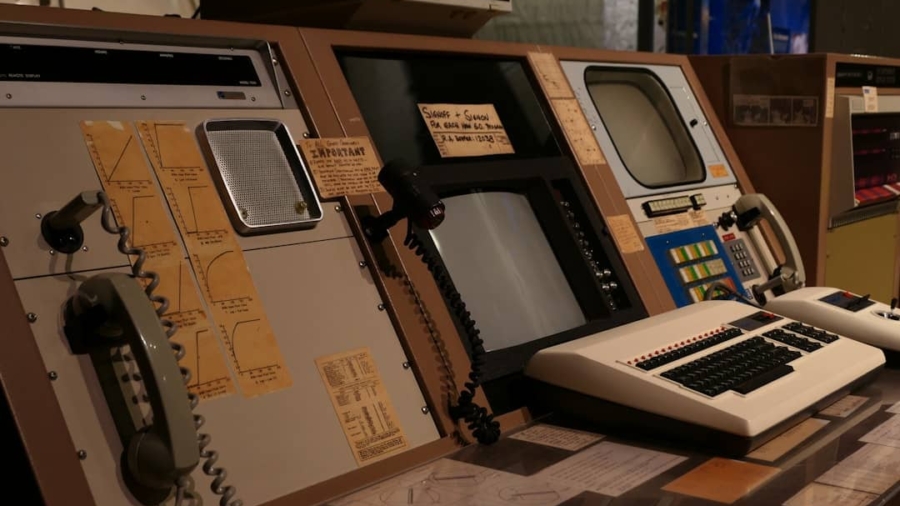A Digital Command Center (DCC) serves as a centralized hub for managing and monitoring various digital operations, whether in a corporate environment, a smart home, or a public safety context. The primary purpose of a DCC is to streamline communication, enhance situational awareness, and facilitate decision-making processes. In a corporate setting, for instance, a DCC can integrate data from multiple departments, allowing for real-time analysis and response to emerging challenges.
This integration is crucial for organizations that rely on data-driven strategies to maintain competitiveness in their respective markets. In the realm of smart homes, the DCC acts as the nerve center for all connected devices, enabling homeowners to control lighting, security systems, climate control, and entertainment systems from a single interface. This not only enhances convenience but also improves energy efficiency and security.
By consolidating control over various systems, users can create automated routines that optimize their living environment based on personal preferences and schedules. The DCC thus transforms the way individuals interact with technology, making it more intuitive and responsive to their needs.
Key Takeaways
- Understanding the purpose of a digital command center is essential for effective use and management of digital tools and resources.
- Choosing the right location for your digital command center involves considering factors such as accessibility, visibility, and connectivity.
- Selecting the essential equipment for your digital command center requires careful consideration of your specific needs and goals.
- Organizing and managing cables and power sources is crucial for maintaining a clean and efficient digital command center setup.
- Setting up a smart home integration with your digital command center can enhance convenience and control over various connected devices and systems.
Choosing the Right Location for Your Digital Command Center
Corporate Environment
In a corporate setting, a dedicated room equipped with soundproofing can help minimize external noise and interruptions, allowing team members to focus on their tasks.
Home Setting
In a home setting, a quiet corner of the living room or a designated office space can serve as an effective DCC location, provided it is equipped with the necessary infrastructure. The physical layout of the space should facilitate collaboration and communication among users.
Optimizing the Space
Considering factors such as natural light and ventilation can enhance the overall atmosphere of the DCC, making it a more pleasant environment for prolonged use. The layout should be designed to promote interaction and engagement, whether it’s a circular formation in a corporate DCC or an open layout in a home DCC.
Selecting the Essential Equipment for Your Digital Command Center
The equipment you choose for your Digital Command Center will significantly influence its performance and usability. At the core of any DCC is a robust computer system capable of handling multiple applications simultaneously. This often includes high-performance processors, ample RAM, and dedicated graphics capabilities to support data visualization tools and real-time analytics software.
For instance, in a corporate setting, using enterprise-grade software like Tableau or Microsoft Power BI can enable teams to visualize complex data sets effectively. In addition to computing power, peripherals such as large monitors or multi-screen setups can enhance productivity by providing ample screen real estate for monitoring various data streams or applications concurrently. Touchscreen interfaces can also be beneficial for quick interactions and adjustments.
Furthermore, investing in high-quality audio-visual equipment is essential for effective communication during meetings or presentations. This includes microphones, speakers, and cameras that ensure clear audio and video quality during virtual collaborations.
Organizing and Managing Cables and Power Sources
One of the often-overlooked aspects of setting up a Digital Command Center is the organization of cables and power sources. A cluttered workspace can lead to inefficiencies and even safety hazards. To mitigate these issues, implementing cable management solutions is crucial.
This can include using cable trays, clips, or sleeves to bundle cables together neatly and prevent tangling.
Power sources should also be strategically managed to avoid overloading circuits or creating tripping hazards.
Utilizing surge protectors and uninterruptible power supplies (UPS) can safeguard sensitive equipment from power surges and outages. Additionally, labeling cables can simplify troubleshooting and maintenance tasks by making it easier to identify which cable connects to which device. By prioritizing organization in your DCC setup, you create an environment that promotes efficiency and reduces stress during high-pressure situations.
Setting Up a Smart Home Integration with Your Digital Command Center
Integrating smart home technology into your Digital Command Center can significantly enhance its functionality and user experience. This integration allows for centralized control over various smart devices such as thermostats, lights, security cameras, and entertainment systems. For example, using platforms like Google Home or Amazon Alexa enables users to issue voice commands to control multiple devices simultaneously.
This not only streamlines operations but also adds an element of convenience that can be particularly beneficial in busy households. To achieve seamless integration, it is essential to choose compatible devices that can communicate effectively with your DCC system. Many smart home devices utilize protocols such as Zigbee or Z-Wave for communication; therefore, selecting a hub that supports these protocols can enhance interoperability among devices.
Additionally, creating automated routines through your DCC can optimize energy usage and improve security. For instance, programming your lights to turn off automatically when you leave home or setting your thermostat to adjust based on your daily schedule can lead to significant energy savings over time.
Customizing Your Digital Command Center for Personalized Use
Customization in Corporate Settings
In a corporate setting, team members can benefit from personalized dashboards that display relevant metrics or project updates tailored to their specific roles. This level of customization ensures that users have quick access to the information they need without sifting through irrelevant data.
Personalization in Home Environments
In a home environment, personalization can extend beyond software interfaces to include physical elements such as furniture arrangement or decor. Creating a comfortable workspace with ergonomic furniture can improve productivity and reduce fatigue during long hours of use.
Reflecting Personal Style
Additionally, incorporating elements that reflect personal style—such as artwork or plants—can make the DCC feel more inviting and less sterile. By investing time in customization, users can create an environment that not only meets their functional needs but also resonates with their personal tastes.
Maintaining and Updating Your Digital Command Center
Regular maintenance and updates are essential for ensuring that your Digital Command Center remains efficient and secure over time. This includes routine checks on hardware components such as computers and peripherals to ensure they are functioning optimally. For example, cleaning dust from vents and fans can prevent overheating issues that may arise from prolonged use.
Establishing a schedule for regular maintenance tasks can help streamline this process. For instance, setting aside time each month to review system performance metrics or conduct software updates can prevent minor issues from escalating into major problems.
Furthermore, documenting any changes made to the system—such as new installations or configurations—can aid in troubleshooting future issues by providing a clear history of modifications made over time.
Troubleshooting Common Issues with Your Digital Command Center
Despite careful planning and setup, users may encounter common issues with their Digital Command Centers that require troubleshooting skills. One frequent problem is connectivity issues between devices within the DCC ecosystem. This could stem from network disruptions or compatibility problems between devices.
To address this issue, users should first check their network settings and ensure that all devices are connected to the same Wi-Fi network or hub. Another common challenge is software glitches that may arise during operation. These could manifest as slow performance or application crashes.
In such cases, restarting the affected application or rebooting the entire system often resolves these issues. If problems persist, consulting user forums or manufacturer support resources can provide additional insights into potential fixes or workarounds. By developing a systematic approach to troubleshooting common issues, users can maintain the functionality of their Digital Command Centers effectively while minimizing downtime.
If you are looking to enhance your home office setup with the latest technology, you may want to consider the best laptop for copywriters. Having a reliable and efficient laptop can greatly improve your productivity and creativity when working on digital command center projects. This article provides valuable insights into finding the perfect writing companion for your needs.
FAQs
What is a digital command center for the home?
A digital command center for the home is a centralized system that allows you to manage and control various aspects of your home, such as security, entertainment, and energy usage, through digital devices and platforms.
What are the benefits of setting up a digital command center for your home?
Setting up a digital command center for your home can provide benefits such as increased convenience, improved security, energy efficiency, and the ability to customize and automate various aspects of your home.
What are some common features of a digital command center for the home?
Common features of a digital command center for the home include smart home devices such as thermostats, security cameras, smart locks, voice assistants, and entertainment systems that can be controlled and managed through a central platform or app.
How can I set up a digital command center for my home?
To set up a digital command center for your home, you can start by choosing the devices and systems you want to integrate, selecting a central platform or app to control them, and then configuring and connecting the devices to the central system.
What are some popular platforms for setting up a digital command center for the home?
Popular platforms for setting up a digital command center for the home include Amazon Alexa, Google Home, Apple HomeKit, and smart home hubs such as Samsung SmartThings and Hubitat Elevation.



